Up Next

Formula 1 pre-season testing is a time of excitement for drivers, teams and fans alike as new cars hit the track. It’s all about high hopes and expectations – before the realities of a long, hard and sometimes uncompetitive season kick in.
But it’s also a time when strange things happen. Cars don’t work as anticipated, drivers turn up in unexpected places, and crashes can bring whole teams to a juddering halt – with myriad difficulties coming out of the left-field.
While once testing was largely conducted out of the public eye, in recent years there has been increased as-it-happens coverage from the likes of The Race. With the eyes of the F1 world locked onto the test venues, it’s become impossible to keep such strange goings on under wraps.
Here, we look at 10 of strange incidents from previous pre-season tests.
CAMOUFLAGE LIVERY
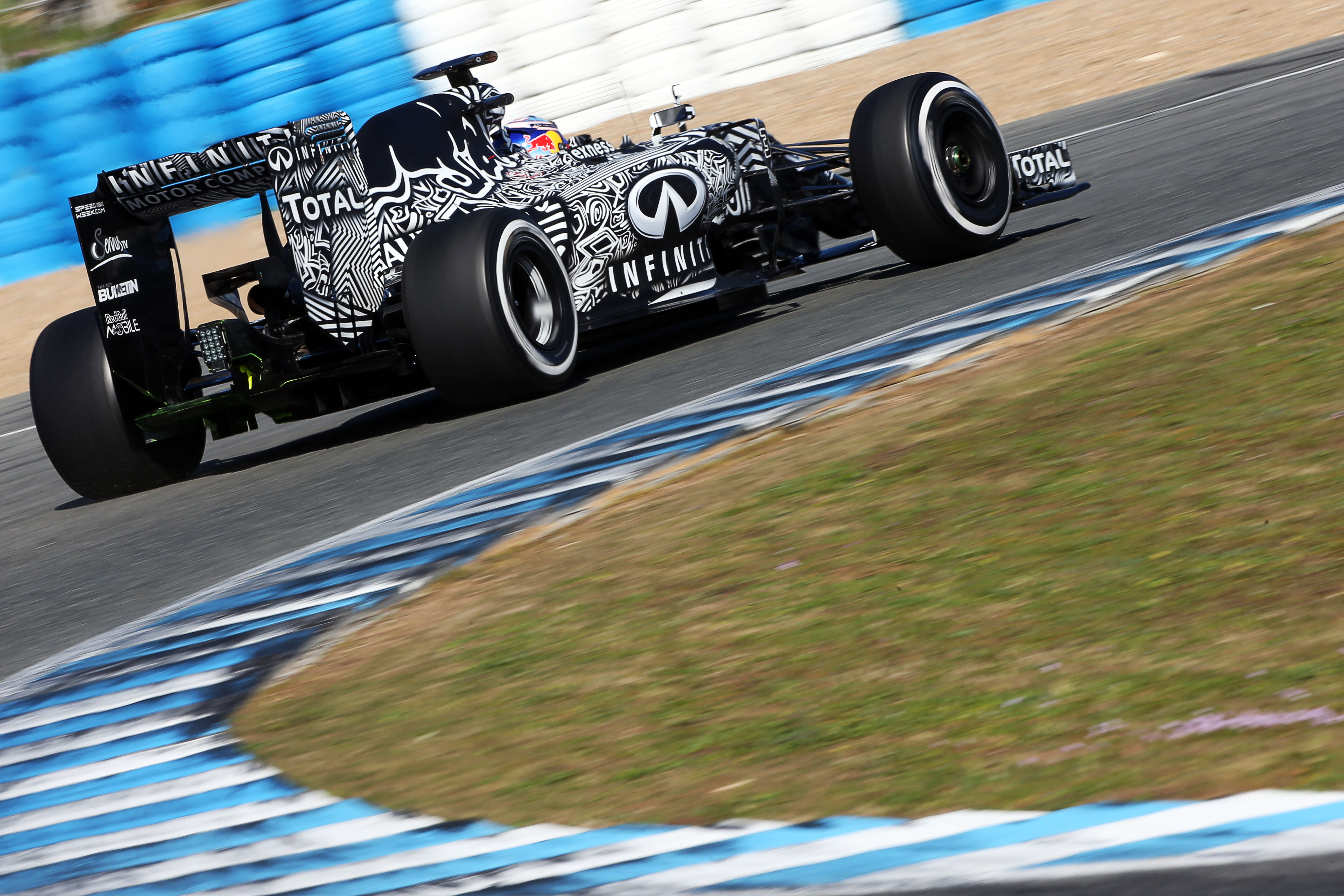
The automotive world is used to camouflage colour schemes shrouding prototype road cars, but it wasn’t until 2015 that Red Bull brought this into F1.
It launched and then tested the Red Bull RB11 in a special black-and-white livery – inspired by a special helmet design Sebastian Vettel used at the previous year’s Italian Grand Prix – conceived to confound photographers, fans and rival technical directors.
Come the start of the season, Red Bull was back in its regular livery. But it did repeat the special testing paint job in 2018 with a black, white and blue look. It also launched and shook down its 2019 car running in a purposeful blue and red colour scheme.
WILD WEATHER
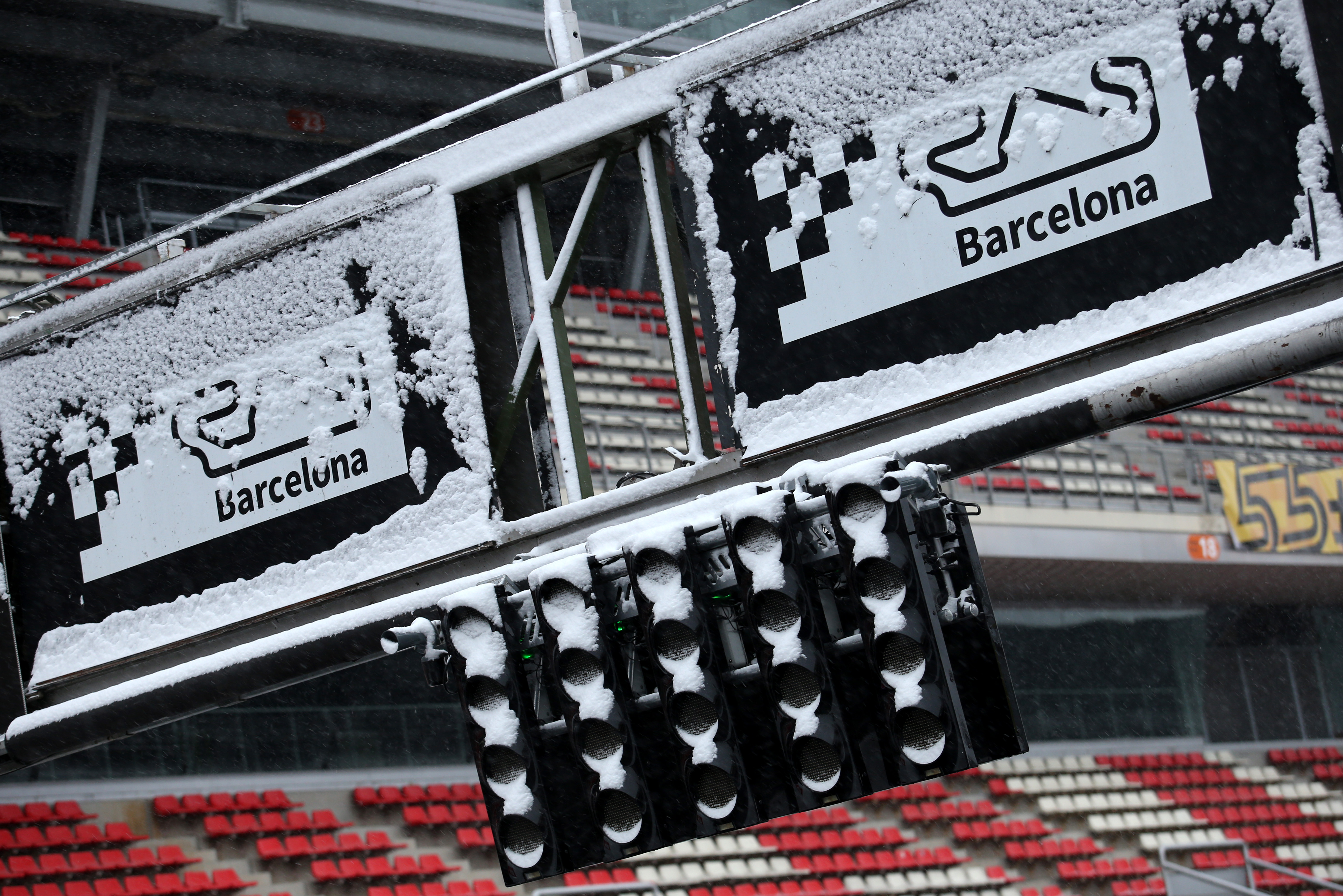
Given pre-season testing often takes place in the European winter, the weather can never entirely be trusted. Rain isn’t unusual, but there are other problematic phenomena.
Snow isn’t unheard of – Fernando Alonso even ran in it at Silverstone in 2005. More recently, at Barcelona in 2018, day three of the first pre-season test was rendered almost completely useless by a combination of snow and rain. A grand total of 17 laps were logged.
Even if F1 opts to go further afield, it’s no guarantee of smooth running. In Bahrain last year sandstorms struck, while at the same venue in 2009 a test involving Ferrari, BMW Sauber and Toyota was ruined by more intense sandstorms.
But sometimes artificial rain is required. At Barcelona in 2018, Pirelli needed wet testing so deposited water onto the track using a series of trucks before the start of running on the final day of the first pre-season test.
This was of negligible use, with vaguely full wet conditions only present for the opening hour and cars switching to slicks later on in the morning. Pirelli did the same again in the afternoon, but most teams just waited for the track to dry out.
LOTUS GOES MISSING
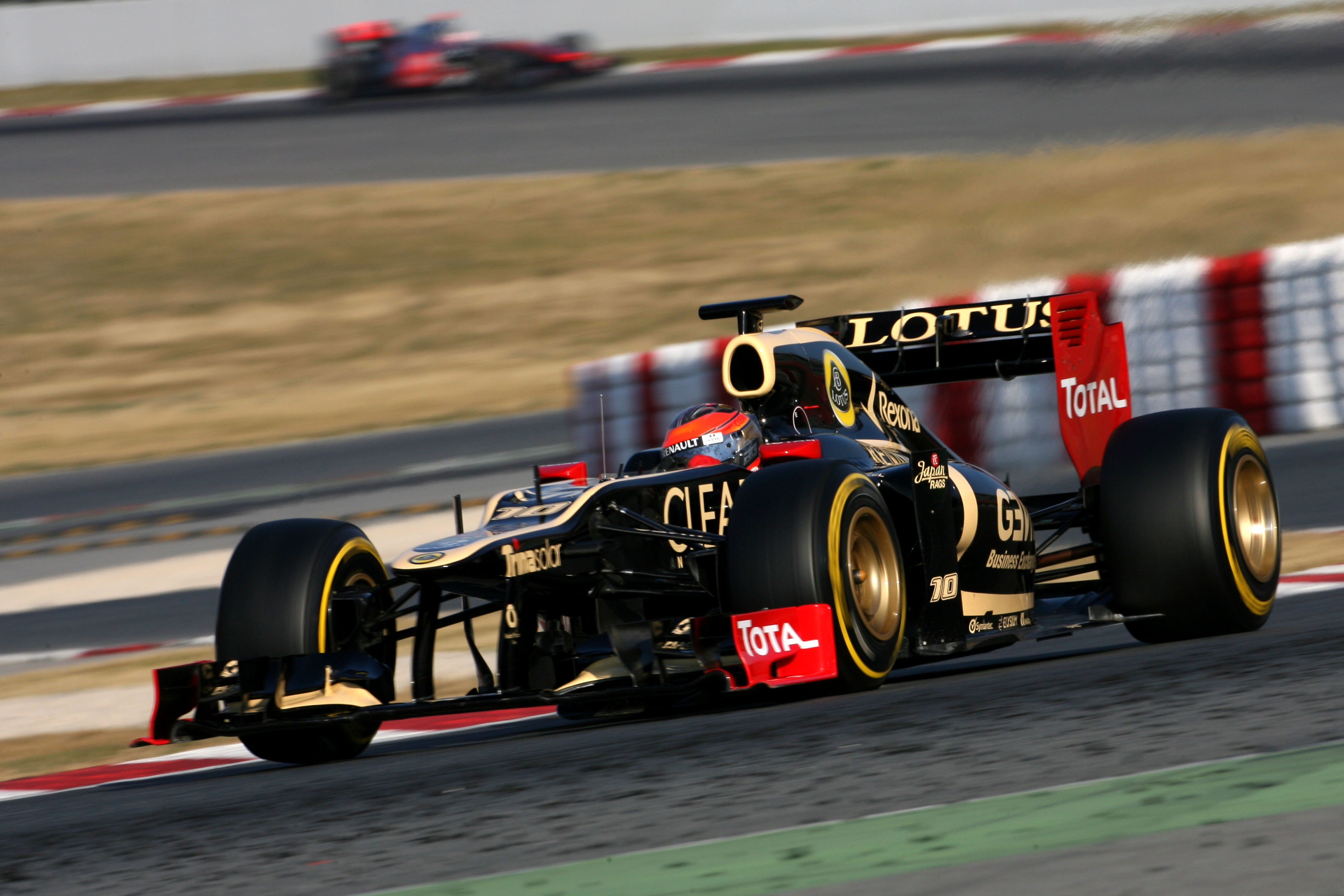
Lotus was second fastest in the first pre-season test at Jerez in 2012 with Romain Grosjean and completed 1111 miles.
So it was a surprise that after completing just 20 miles on the first morning of the second pre-season test at Barcelona, Lotus announced it could not continue for the rest of the four days of running.
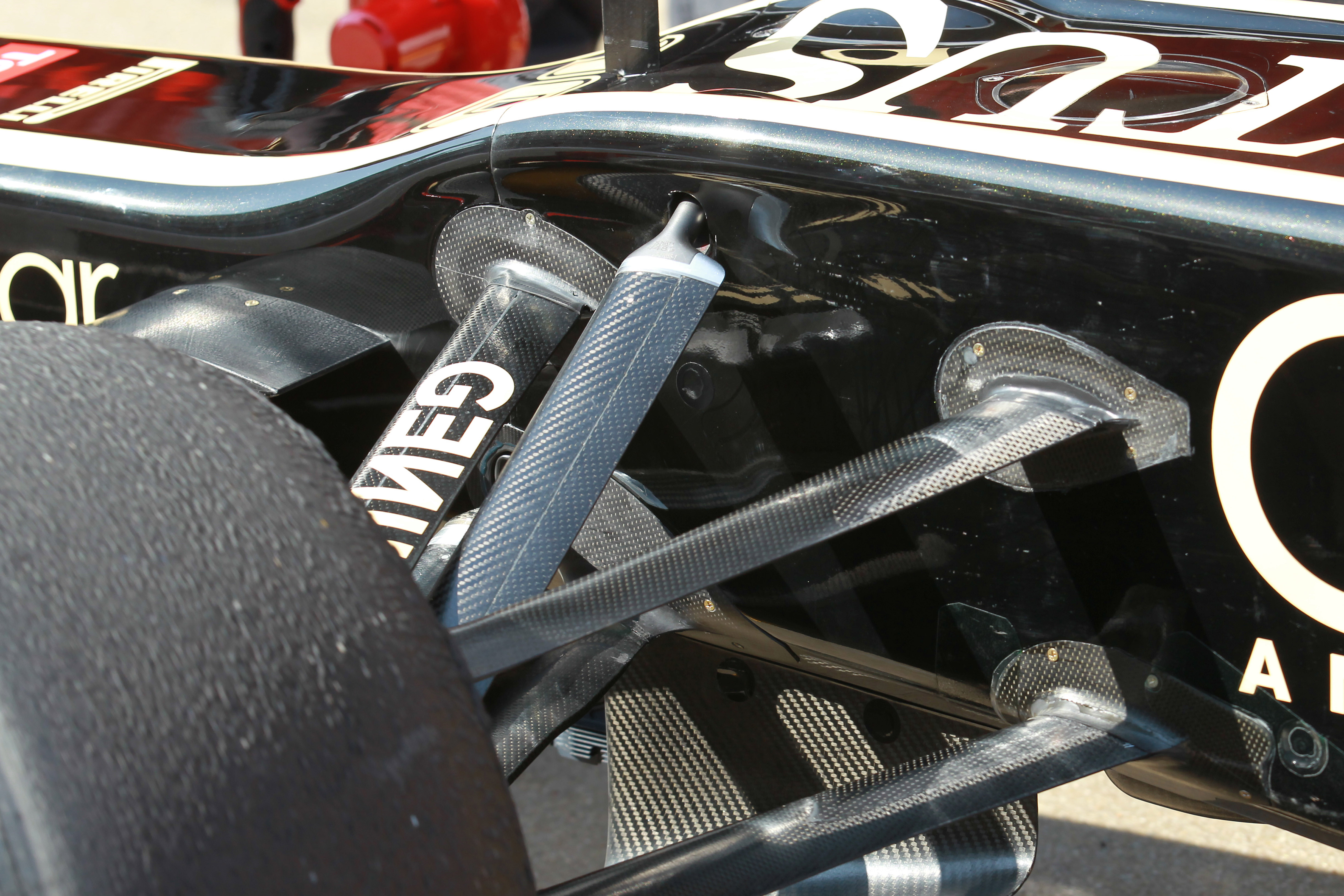
A problem was first detected as Grosjean approached Turn 1, the highest-speed part of the circuit. Movements under load meant the front suspension arms damaged the chassis, thanks to the lightweight carbonfibre mounts embedded in the chassis not being strong enough.
As this was the Lotus’s second E20 chassis, the team was able to put its first chassis on a rig at the factory and replicated the problem.
This led to it abandoning running and manufacturing replacement aluminium front suspension mountings for use at the third pre-season test eight days later.
STUTTERING START TO V6 TURBO HYBRID ERA
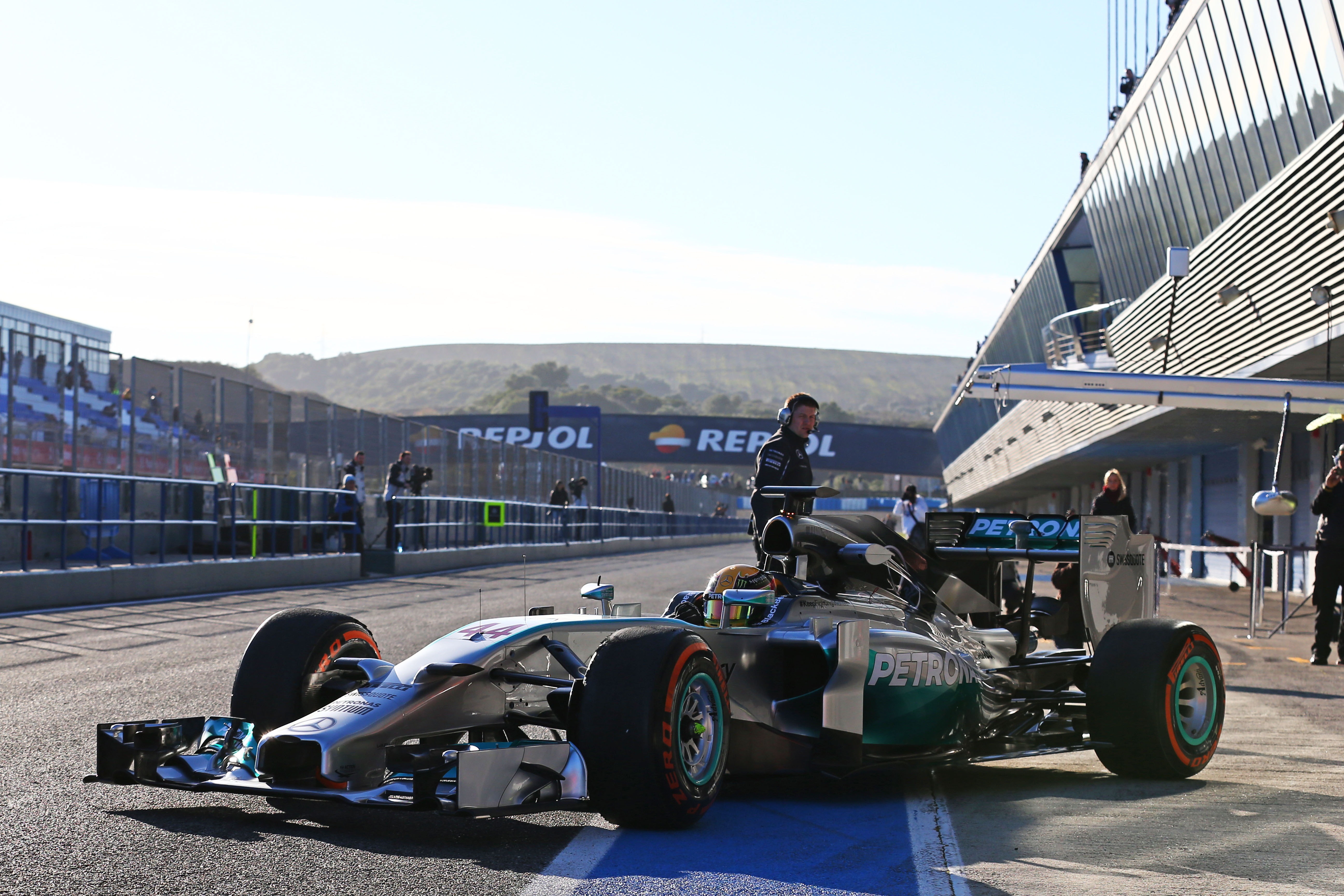
The first 2014 pre-season test at Jerez was one of the most eagerly-anticipated in years, as it marked the first on-track appearance of the new 1.6-litre V6 turbo hybrid cars.
Yet when the track opened, little happened. Lewis Hamilton managed to complete an early installation lap in the Mercedes, which had already been shaken down at Silverstone, but it was 2 hours and 20 minutes before he became the first driver to complete a flying lap.
His running later came to an end after 19 laps when he suffered a front-wing failure – but his mileage still amounted to around a fifth of the total laps completed that day.
The eight cars that ran managed just 93 laps between them, with Red Bull and Caterham not setting a lap time, McLaren unable to leave the garage because of electrical and hydraulics problems, and Marussia not even leaving its UK base until early that morning to take the car to the track.
It seemed inconceivable that just 47 days later the teams would be in a fit state to contest the Australian Grand Prix.
WILLIAMS LATE – AND ILLEGAL
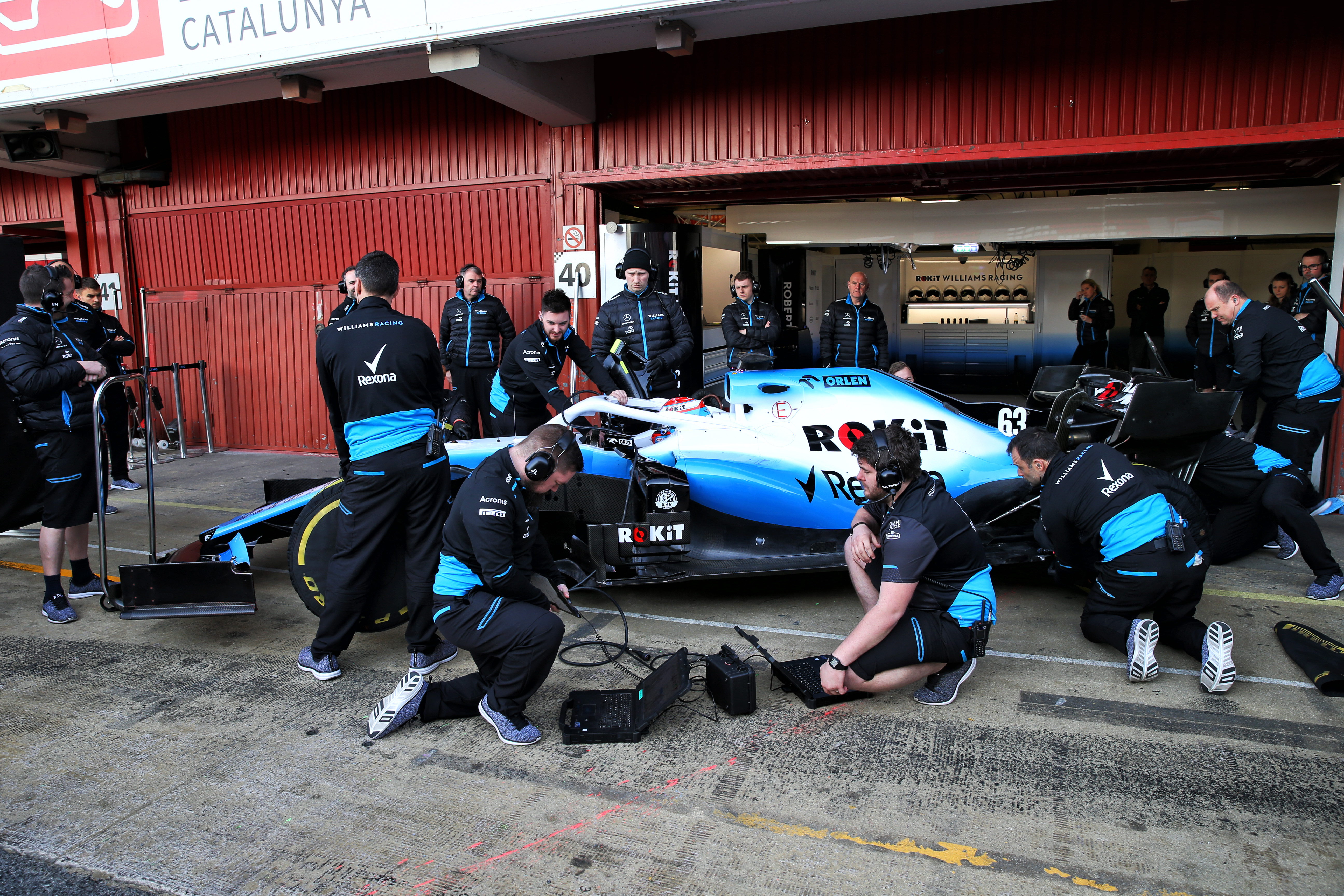
It’s not unheard of for teams to make a late start to testing, but usually this is by design. In 2019, Williams fully intended to be on track for the first day of testing, but the car hadn’t even left the factory in the UK by the time the track was open as it was still waiting for essential parts to be completed.
It wasn’t ready to run until the afternoon of the third day of pre-season testing, when George Russell completed 23 laps and set a time just under eight seconds off the pace.
Team-mate Robert Kubica managed 48 laps the following day, but Williams got little meaningful work done during the first test.
The car ran more reliably at the second test, completing 1385 miles, but the car’s best lap was almost two seconds off the pace.
To add insult to injury, it also had to change both its wing mirror and front suspension design prior to the season-opening Australian Grand Prix.
Its curved wing-mirror was replaced by a more orthodox design, while it had to remove a seventh suspension member running along the rear edge of the lower front wishbone because of rules permitting only six suspension members.
Unsurprisingly, Williams endured a point-less season.
DAS IS REVEALED
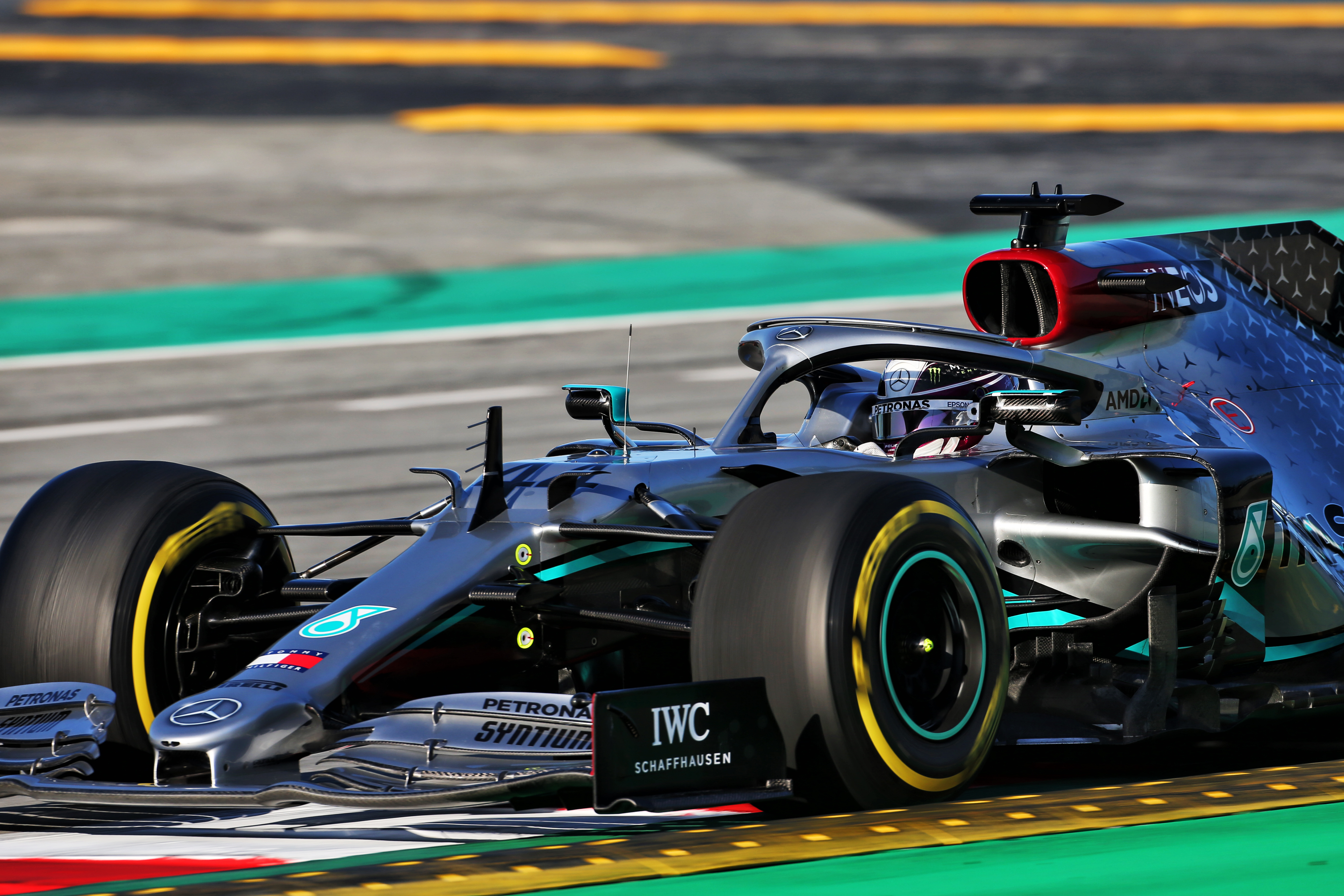
On the second day of Barcelona pre-season testing in 2020, something strange was spotted in the onboard footage from Lewis Hamilton’s Mercedes. On the straights, he appeared to be changing the toe of the front wheels by pulling the steering wheel back, then returning it to normal by pushing it forward prior to Turn 1.
Mercedes technical director James Allison was happy to reveal it was called DAS – dual-axis steering – but stayed tight-lipped on its purpose.
“I probably won’t shed a great deal more light than you saw on the TV. But we have a system in the car, it’s a novel idea,” said Allison.
“We’ve got a name for it, it’s called DAS, and it just introduces an extra dimension for the steering, for the driver, that we hope will be useful during the year. But precisely how we use it, why we use it, that’s something we prefer to keep to ourselves.”
Mercedes did not doubt the legality of DAS, having been in communication with the FIA for some time about it. In fact Allison later revealed the FIA had rejected its initial lever-actuated design but did accept that it would be legal if it was activated using a movement of the steering wheel.
The key benefit of DAS proved to be in warming up the front tyres, but given the regulations had already been changed for the following season to prevent such designs, nobody else copied it.
MARUSSIA’S TROJAN HORSE
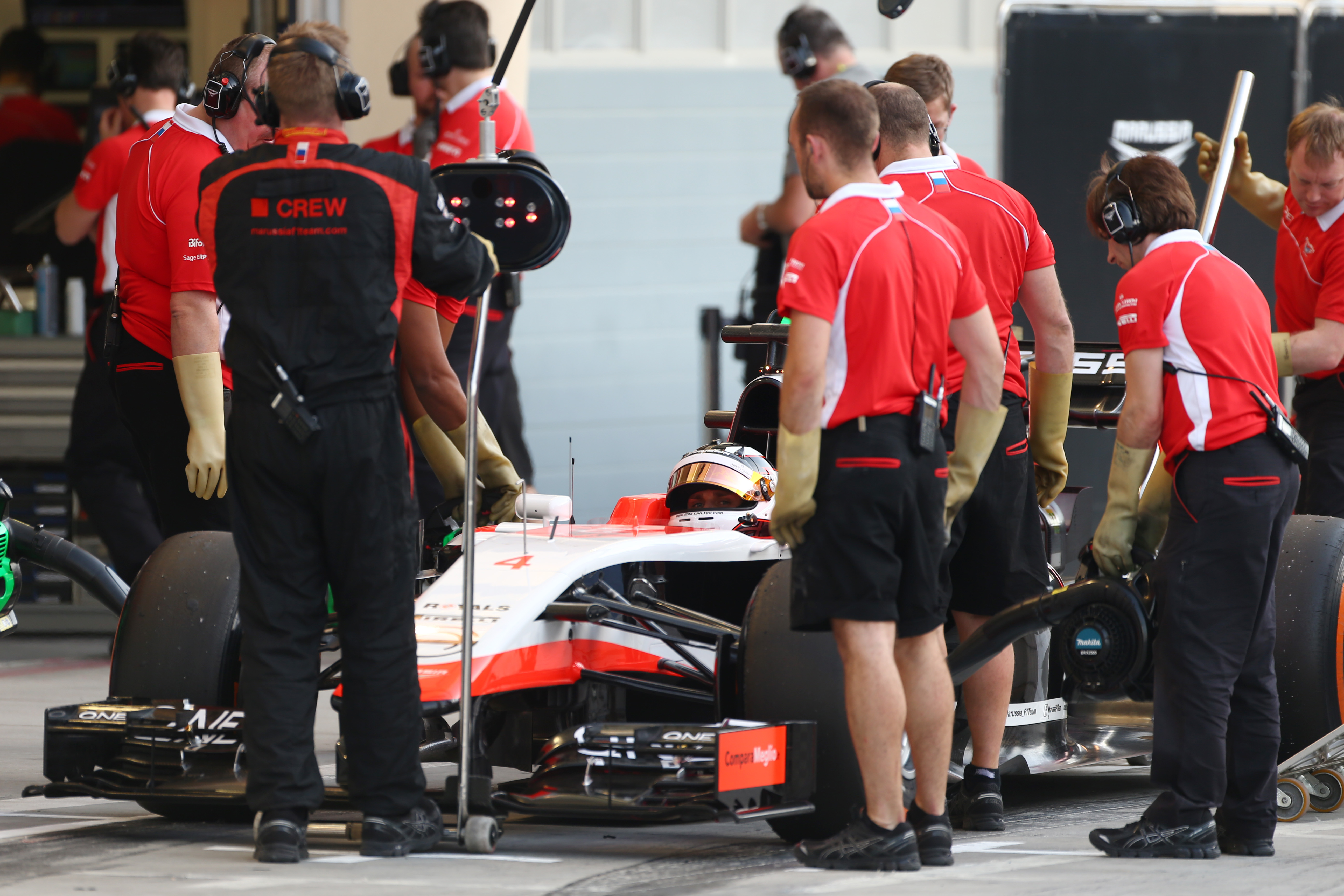
Marussia only managed 30 laps during the first pre-season test of 2014, so mileage was critical when it arrived in Bahrain for the second test. So when a computer virus – specifically Trojan malware – infected its systems and made it impossible to run the car for most of the first day, that was the last thing the struggling team needed.
Jules Bianchi did manage to complete three installation laps late on, but Marussia never really recovered as a litany of problems restricted it to a total of 29 laps across the four days of running in Bahrain.
Summarising Marussia’s troubles, team principal John Booth said: “It started off with the first disaster, which was a computer Trojan-type virus, which cost us the best part of the day. So that set the tone for the week.
“On the second day, we did 17 laps and it was OK, working through problems, but then on Friday we lost most of the day with an engine issue and it took all day to change.
“The final day was a series of little problems. In the morning, we had an ERS light come on but it turned out to be a false signal, so that was two hours lost. Then there was a fuel system problem.”
RED BULL’S WINGLESS WONDER
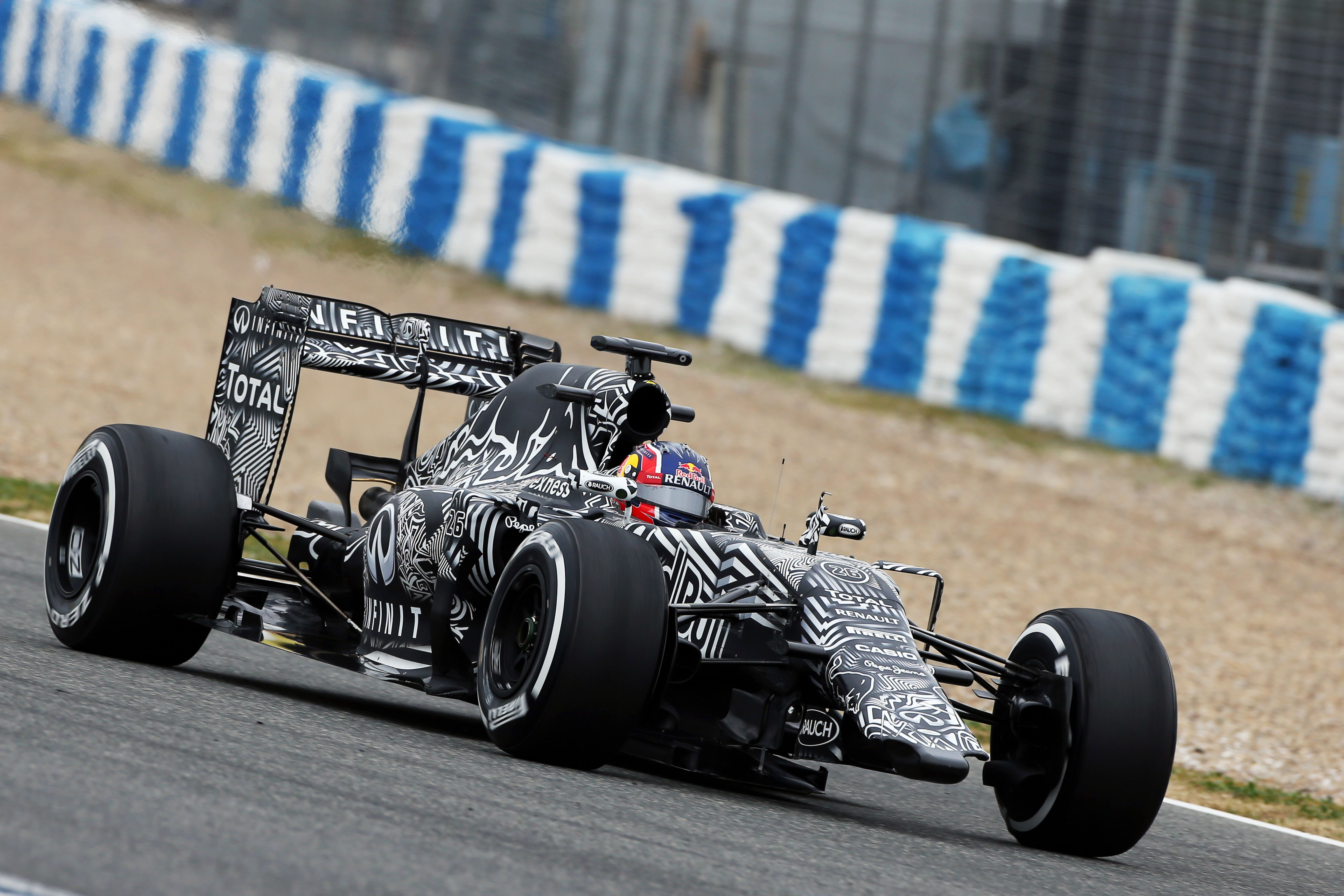
Formula 1 drivers are used to having plenty of spares lying around, but this isn’t always the case during pre-season testing – as Daniil Kvyat discovered to his and Red Bull’s cost at Jerez in 2015.
Kvyat took over from team-mate Daniel Ricciardo for the second day of pre-season testing, but in cold conditions and on cold tyres on his out-lap, he spun coming out of the Turn 2 right-hander and lightly crunched his front wing in the tyre barrier.
Kvyat said the crash “almost felt out of my power, to be honest” and that “it was one of the smallest incidents I’ve had, but one of the most costly”.
Red Bull didn’t have a spare and wasn’t able to repair the damage in time to run it again for the rest of the day. But it made the most of it, sending Kvyat back out to gather what data was possible with the front wing and its supports missing.
Kvyat completed only 18 slow laps and didn’t register a lap time, and not even the Red Bull camouflage livery could hide the fact that his error had pretty much ruined a valuable test day.
MYSTERY ALONSO CRASH
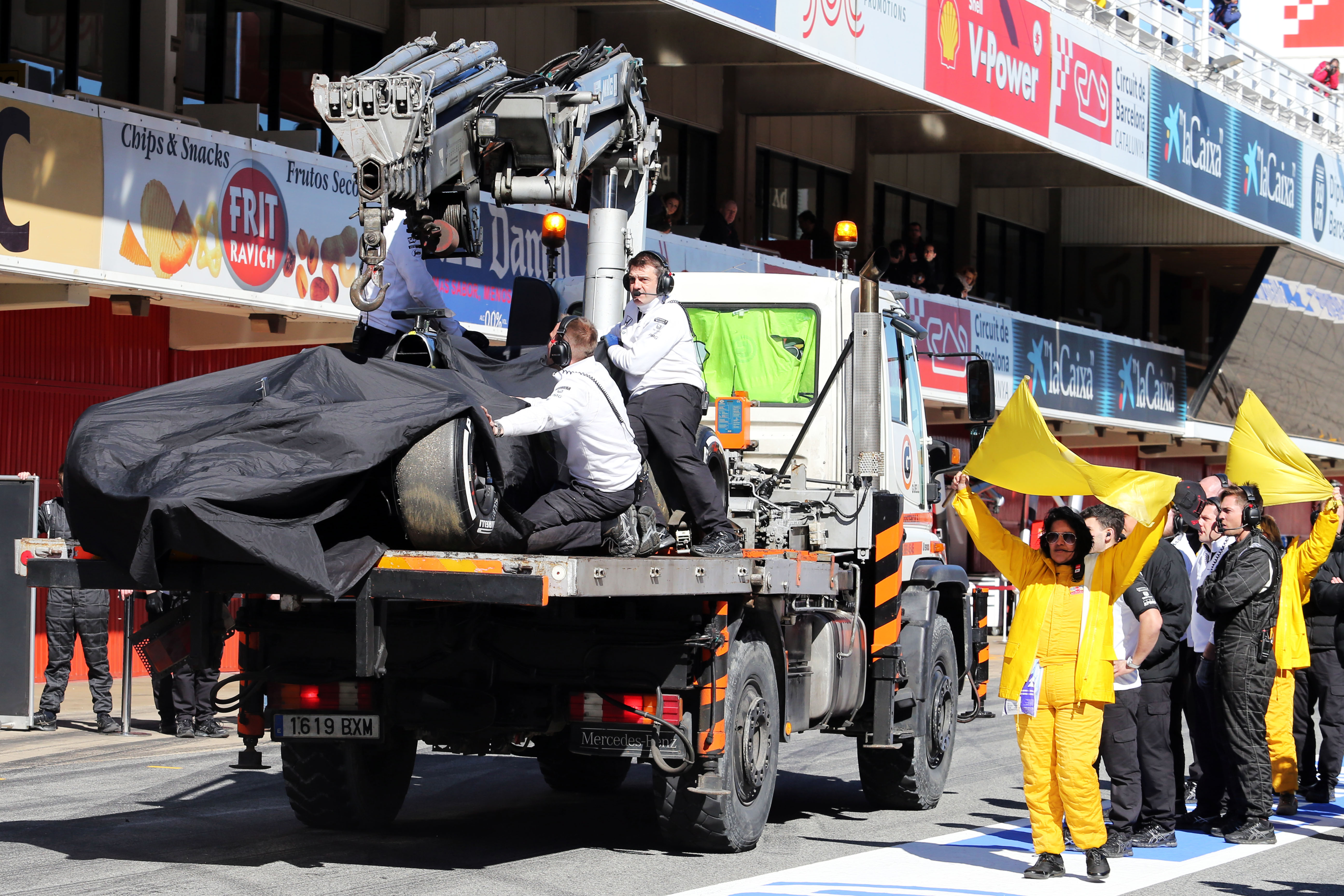
The mystery that once shrouded testing crashes has been eradicated by the comprehensive coverage in recent years – with one exception. When Fernando Alonso hit the inside wall at the exit of Turn 3 on the final day of the second pre-season test at Barcelona in 2015, there were all sorts of theories.
He had been electrocuted; he had blacked out behind the wheel; he had suffered a seizure. All of these were, incorrectly, speculated as causes. It wasn’t helped by McLaren team boss Ron Dennis denying Alonso had suffered a concussion – only for Alonso to then spend three nights in hospital and miss the first race of the season.
“Fernando is completely devoid of injury. I’m not trying to conceal anything,” said Dennis at the time of the crash. “I’m just telling you the facts, he is physically perfect. There is no concussion.
“There was a period of unconsciousness. It was relatively short. There were rumours of electrocution but there was absolutely, categorically no electrocution.”
Dennis did later admit he was wrong to say there was no concussion, with Alonso’s absence from Australia because of a fear of a secondary concussion so close to the initial crash.
McLaren blamed the off on an unexpected gust of wind destabilising the car, but it wasn’t until F1 arrived for the second race of the season in Malaysia that Alonso provided his account of the accident. He blamed a steering problem for sending him into the wall and revealed McLaren had changed components in the steering rack as a result.
“It’s not in the data anything clear that we can spot and say that was the reason,” said Alonso. “But definitely we had a steering problem in the middle of Turn 3.
“It locked to the right, I approached the wall, I braked at the last moment, I downshifted from fifth to third.
“Unfortunately, from the data we are still missing some parts. Also data acquisition on that particular area of car is not at the top.
“There are some new sensors this race. There are some changes to the steering rack and other parts.”
PROST DISGUISES HIMSELF
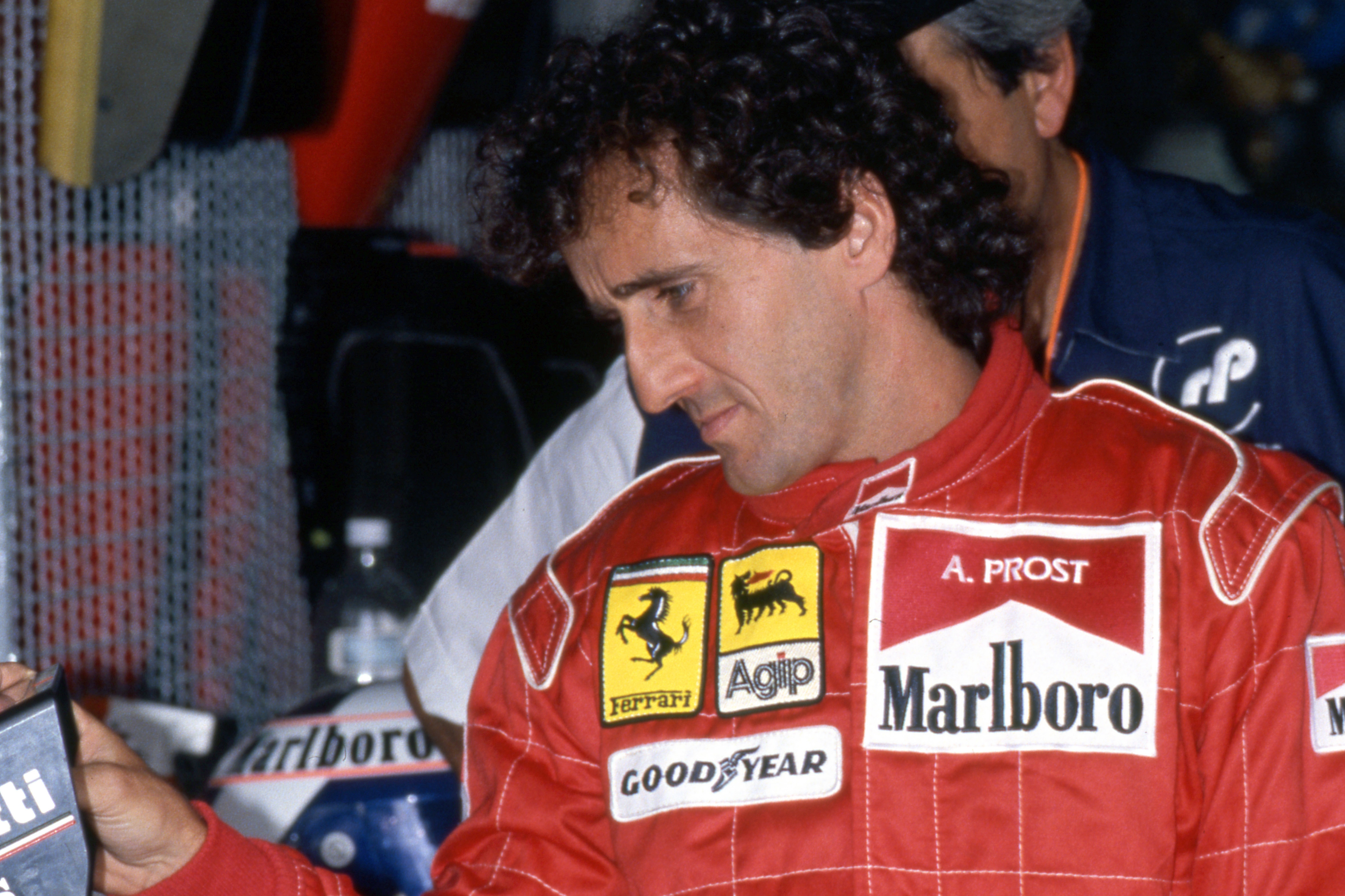
After being sacked by Ferrari in acrimonious circumstances at the end of 1991, Alain Prost was left without a drive for the following season. But he was courted by French team Ligier and even tested its car several times pre-season.
Prost went incognito for the first Ligier test at Paul Ricard in January. Wearing the tricolour helmet of compatriot Erik Comas – at the time the team claimed this was because his own lacked the required radio fittings – and white overalls, he tried out the Ligier-Renault JS37 and showed impressive pace compared to regular driver Thierry Boutsen.
Given the impossibility of keeping his test secret, his subsequent running was conducted as Alain Prost.
He completed significant test mileage at Paul Ricard, Magny-Cours and Estoril, but a deal that would have ultimately led to Prost being given a controlling stake in the team didn’t come to pass because of lack of backing.
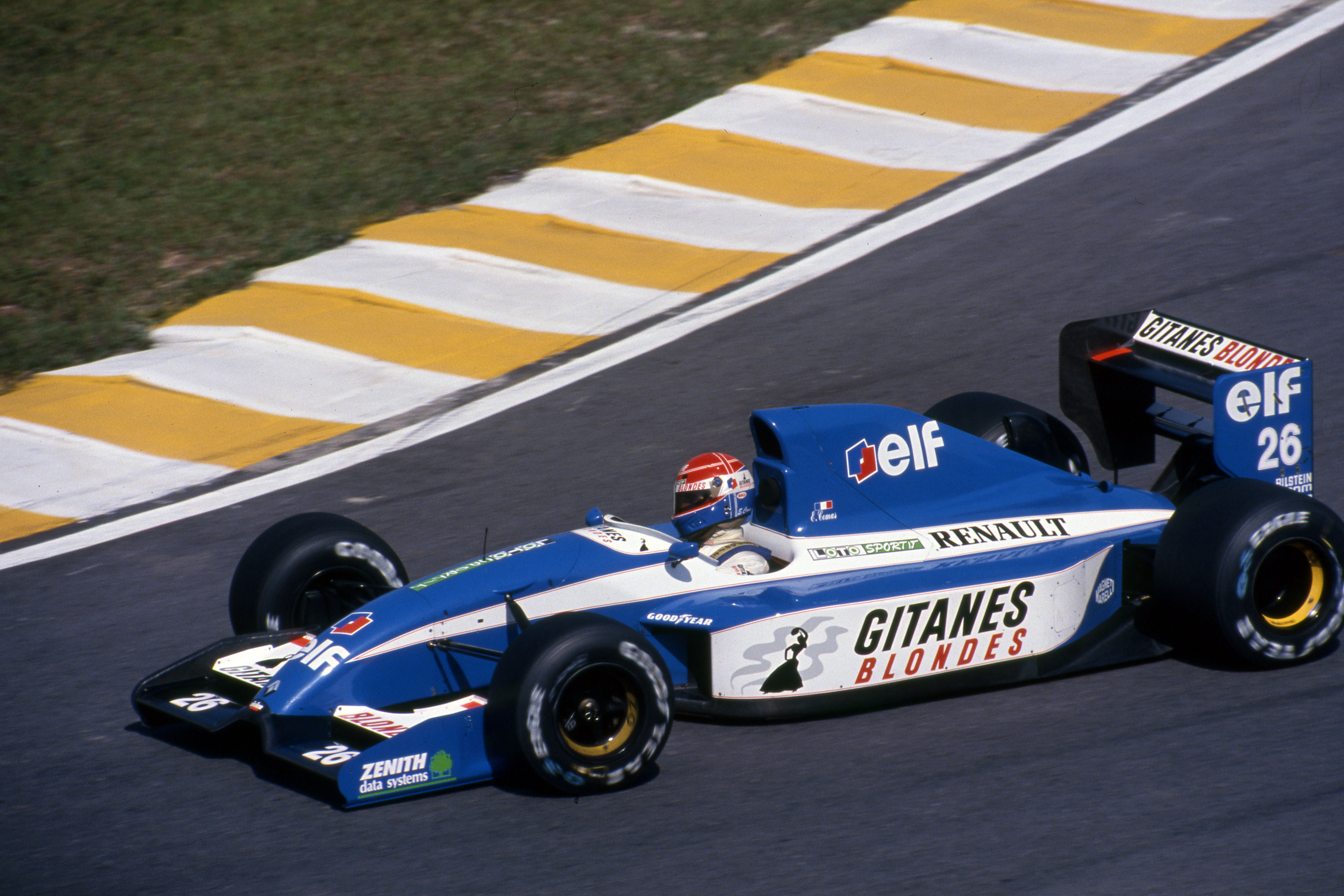
“I would not want to be just the driver,” said Prost. “I brought along people who would have been responsible for the organisation and technical management.
“They would have enabled the team to climb to the highest level but that would have been expensive.”
Prost’s final decision didn’t come until after the opening race of the season at Kyalami, where Ligier ran in the midfield. The news came to the relief of Comas, who would have lost his Ligier drive to accommodate Prost.









